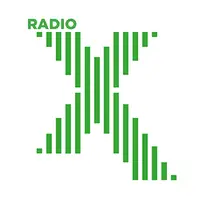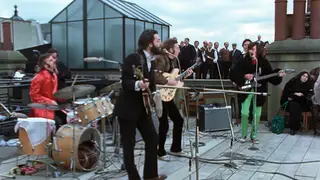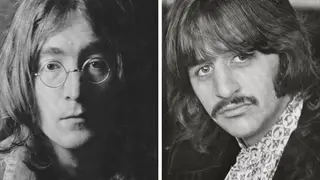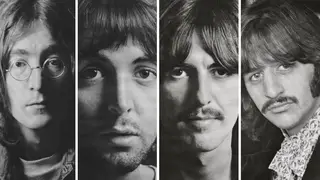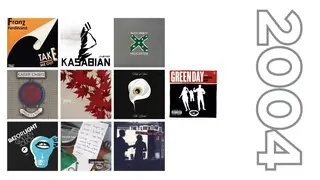What are the Red and Blue Beatles albums?
17 April 2024, 17:45
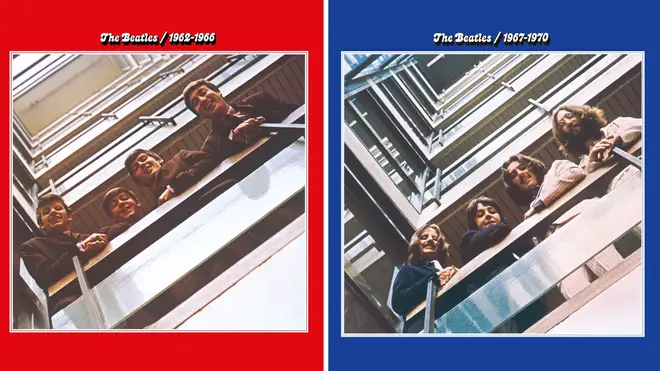
51 years ago, a pirated box set of Fab Four material cause the band's record label to release two of the best-selling greatest hits albums of all time... Here's the full story.
Listen to this article
Beatles fans were delighted last year when the news was announced that not only was the band's "final" song, Now And Then due for release at the beginning of November, but that the two greatest hits collections 1962-1966 and 1967-1970 we due to get the deluxe reissue treatment at the same time.
The pair of compilations were first issued in 1973, just three short years after The Beatles officially disbanded and 50 years later, the two collections will be released as expanded CD and vinyl editions, plus they will be available to stream and download.
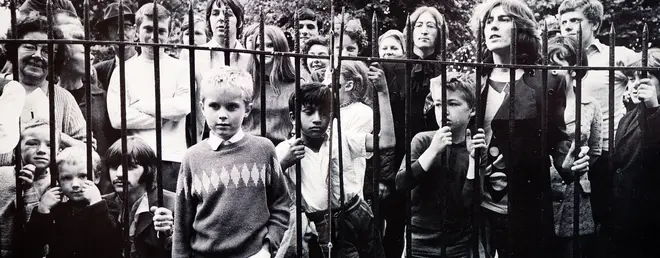
What was the first Beatles compilation?
Even though the Red and Blue albums first appeared in 1973, they were not the first vinyl retrospectives dedicated to the Fab Four. The first Beatles compilation was A Collection Of Beatles Oldies, issued on 9th December 1966, essentially in the slot where the band would usually issue their second album of the year for the Christmas market. As the Fabs had quit touring to focus on recording and were in the middle of working on what would become Sgt Pepper, their label Parlophone decided to create a stopgap album that reached as far back as 1963's From Me To You through to that summer's Eleanor Rigby and Yellow Submarine.
There was also the American compilation Hey Jude, which appeared in February 1970 and collected a number of recent singles (the title track, Don't Let Me Down, Revolution) with some more oldies (Can't Buy Me Love, I Should Have Known Better).
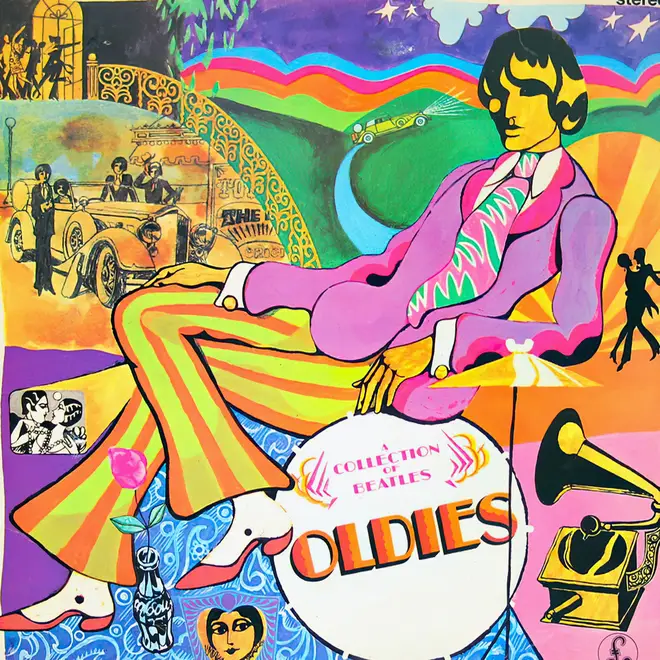
What was The Beatles Alpha & Omega album?
The Beatles formally called it quits in April 1970 and the "final" album Let It Be was issued a month later. But the demand for Beatle product was still huge in the US. So much so, one enterprising label decided to take advantage of America's changing copyright laws and create their own "Best Of".
In February 1972, the US Copyright Act was updated to take into account recorded sound for the very first time. However, the law would only cover any recordings made after the date the Act came onto the statute books: anything recorded before February 1972 was seemingly exempt from the law. At the very least, the law concerning audio copyright would be rather vague.
To this end, a company called "Audio Tape Inc" from Asbury Park, New Jersey compiled a box set called Beatles ΑΩ (Alpha-Omega). This four-LP set (also available on 8-track and cassette) promised "A fabulous collector's edition of 60 Beatles greatest hits from A to Z" and was advertised on radio and TV for the reasonable price of $13.95 (about £83 in today's British pounds).
The tracks were arranged vaguely chronologically starting with 1965's Act Naturally to Yellow Submarine on Side 7, whereby the order fell to bits, with the the final track being Everybody's Trying To Be My Baby from Beatles For Sale. Along the way, there are also some pre-1972 Beatles solo hits, including McCartney's Maybe I'm Amazed, Harrison's Bangladesh and Lennon's Imagine. Confusing, right?
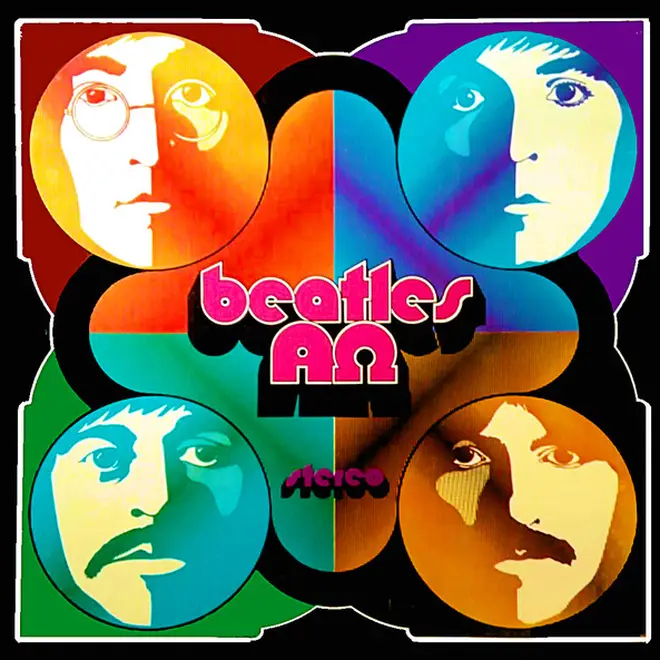
Why were the Beatles Red and Blue albums released?
When The Beatles' label caught wind of Alpha-Omega (and its equally unlicensed sequels, which were already being distributed), they quickly piled on the legal action. Apple was then being managed by famed accountant Allen Klein, who filed a lawsuit on behalf of the band, their label and their senior record company Capitol. The TV ads were soon pulled after the broadcasters were looped into the legal action, meaning the means of selling the box sets was cut off.
Because of the pirate set, Klein realised there was still a hunger for Beatles product, despite the four members moving on to solo careers. Having been the mastermind behind the Hey Jude compilation in 1970 (which the British arm of EMI decided was unnecessary and opted not to release), Klein moved to fill the void left by Alpha-Omega, by creating an official Beatles retrospective.
The resulting albums were titled The Beatles 1962-1966, which spanned the era between Love Me Do in October 1962 and Yellow Submarine in August 1966; and The Beatles 1967-1970, which covered Strawberry Fields Forever in February 1967 to May 1970's The Long & Winding Road.

When were the Beatles Red and Blue albums first released?
The pair of albums were first released on Monday 2nd April 1973 on The Beatles' own Apple Records label, which was still a going concern in that period. To put the release into context, Paul McCartney was about to issue his second album under the Wings moniker, Red Rose Speedway and his hit My Love was in the charts. George Harrison had just wrapped up work on his album Living In The Material World, while Ringo Starr was recording his Ringo LP.
John, meanwhile, had been burnt by the bad critical and commercial reaction to his political album Some Time In New York City and was in the midst of his struggle with the US government, who wanted to deport him for overstaying his allotted time in the country as a visitor.
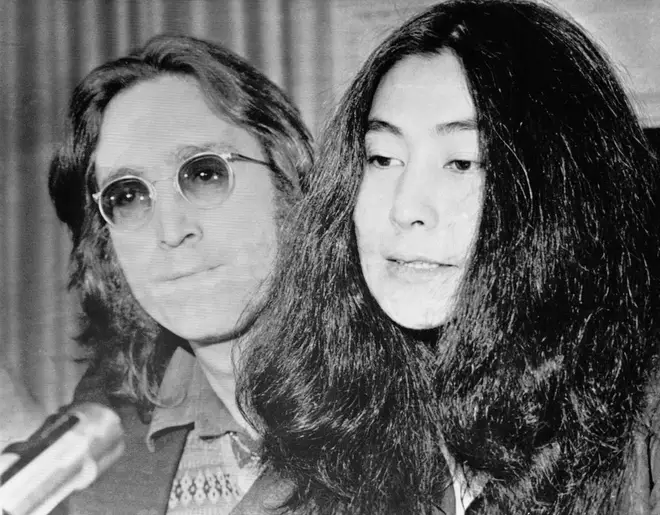
Why were the two Beatles compilations called the "Red and Blue" albums?
The pair of albums were colour-coordinated - 1962-1966 featured a red border, inner sleeves and labels, while 1967-1970 was resplendent in a royal blue colour. Legend has it that the two colours reflected the strips of the two football teams in The Beatles' home city: Liverpool and Everton. In 1978, the two albums were reissued in red and blue vinyl, were repressed in the same colours in 1993 and 2023 will see another coloured vinyl edition.
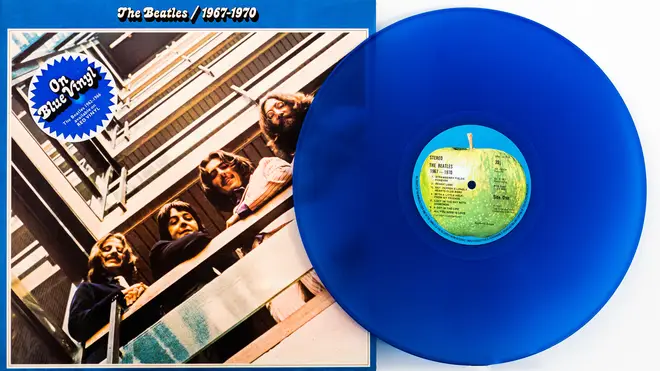
Where were the cover photos of the Beatles Red and Blue albums taken?
The front cover of The Beatles Red album features a photo of John, Paul, George and Ringo leaning over a balcony at EMI's offices in Manchester Square, London. The shot was taken by noted theatre photographer Angus McBean in March 1963 during a session for the group's first LP Please Please Me, but it's a subtly different shot to the one chosen for the debut album,
When The Beatles convened at Twickenham in January 1969 for what became known as the "Get Back" sessions, the resulting material was slated to appear on an album later that year. The original idea was that the record was a nod to the "live" feel of early Beatles album, so the group decided to return to Manchester Square and get Angus McBean to recreate the cover to Please Please Me featuring Lennon, McCartney, Harrison and Starr as they looked in 1969.
The "Get Back" album idea was never used and the photos remained in the archive until 1973, when Apple realised that an outtake from the original 1963 session would go very nicely with a 1969 shot, showing the difference in how The Beatles looked between the start of their career and its very end.
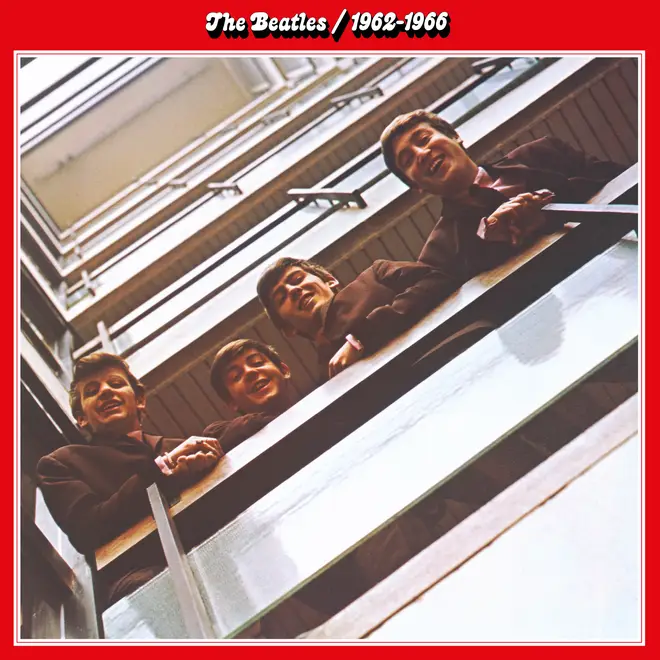
What was the track listing of the original Beatles Red Album?
Side 1
- Love Me Do
- Please Please Me
- From Me To You
- She Loves You
- I Wanna Hold Your Hand
- All My Loving
- Can't Buy Me Love
Side 2
- A Hard Day's Night
- And I Love Her
- Eight Days A Week
- I Feel Fine
- Ticket To Ride
- Yesterday
Side 3
- Help!
- You've Got To Hide Your Love Awat
- We Can Work It Out
- Day Tripper
- Drive My Car
- Norwegian Wood (This Bird Has Flown)
Side 4
- Nowhere Man
- Michelle
- In My Life
- Girl
- Paperback Writers
- Eleanor Rigby
- Yellow Submarine
What is the 2023 expanded track listing of the Beatles Red Album?
The 2023 edition of the Beatles Red album features a number of songs in addition to the original running order. The tracks are featured in chronological order on the expanded CD, plus streaming and download versions, while the extras are included on a third disc in the vinyl edition.
The Beatles 1962-1966 (2023 edition) 2-CD tracklisting
CD1
- Love Me Do (2023 Mix of the original single edit from 1962)
- Please Please Me (2023 Mix)
- I Saw Her Standing There (2023 Mix, extra track from Please Please Me)
- Twist And Shout (2023 Mix, extra track from Please Please Me)
- From Me To You (2023 Mix)
- She Loves You (2023 Mix)
- I Want To Hold Your Hand (2023 Mix)
- This Boy (2023 Mix, extra track, B-side of I Want To Hold Your Hand)
- All My Loving (2023 Mix)
- Roll Over Beethoven (2023 Mix, extra track from With The Beatles)
- You Really Got A Hold On Me (2023 Mix, extra track from With The Beatles)
- Can’t Buy Me Love (2023 Mix)
- You Can’t Do That (2023 Mix, extra track from A Hard Day's Night)
- A Hard Day’s Night (2023 Mix)
- And I Love Her (2023 Mix)
- Eight Days A Week (2023 Mix)
- I Feel Fine (2023 Mix)
- Ticket To Ride (2023 Mix)
- Yesterday (2023 Mix)
CD2
- Help! (2023 Mix)
- You’ve Got To Hide Your Love Away (2023 Mix)
- We Can Work It Out (2023 Mix)
- Day Tripper (2023 Mix)
- Drive My Car (2023 Mix)
- Norwegian Wood (This Bird Has Flown) (2023 Mix)
- Nowhere Man (2023 Mix)
- Michelle (2023 Mix)
- In My Life (2023 Mix)
- If I Needed Someone (2023 Mix, extra track from Rubber Soul)
- Girl (2023 Mix)
- Paperback Writer (2022 Mix)
- Eleanor Rigby (2022 Mix)
- Yellow Submarine (2022 Mix)
- Taxman (2022 Mix, extra track from Revolver)
- Got To Get You Into My Life (2022 Mix, extra track from Revolver)
- I’m Only Sleeping (2022 Mix, extra track from Revolver)
- Here, There And Everywhere (2022 Mix, extra track from Revolver)
- Tomorrow Never Knows (2022 Mix, extra track from Revolver)
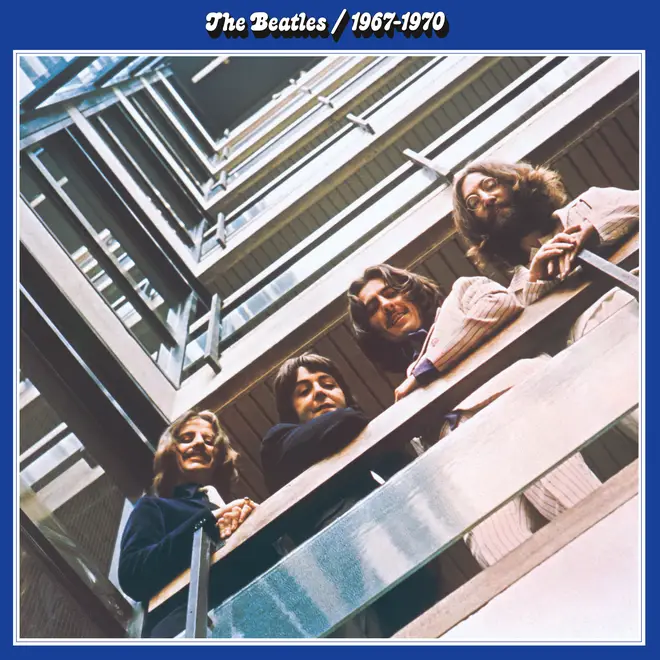
What was the track listing of the original Beatles Blue Album?
Side 1
- Strawberry Fields Forever
- Penny Lane
- Sgt Pepper's Lonely Hearts Club Band
- With A Little Help From My Friends
- Lucy In The Sky With Diamonds
- A Day In The Life
- All You Need Is Love
Side 2
- I Am The Walrus
- Hello Goodbye
- The Fool On The Hill
- Magical Mystery Tour
- Lady Madonna
- Hey Jude
- Revolution
Side 3
- Back In The USSR
- While My Guitar Gently Weeps
- Ob-La-Di Ob-La-Da
- Get Back
- Don't Let Me Down
- The Ballad Of John & Yoko
- Old Brown Shoe
Side 4
- Here Comes The Sun
- Come Together
- Something
- Octopus's Garden
- Let It Be
- Across The Universe
- The Long & Winding Road
What is the 2023 expanded track listing of the Beatles Blue Album?
The 2023 edition of the Beatles Blue album features a number of songs in addition to the 1973 track listing. The tracks are featured in chronological order on the expanded CD, plus streaming and download versions, while the extras are included on a third disc in the vinyl edition. The Blue album also included the final Beatles song, Now And Then as an extra track at the very end.
CD1
- Strawberry Fields Forever (2015 Stereo Mix / 2023 Dolby Atmos Mix)
- Penny Lane (2017 Mix)
- Sgt. Pepper’s Lonely Hearts Club Band (2017 Mix)
- With A Little Help From My Friends (2017 Mix)
- Lucy In The Sky With Diamonds (2017 Mix)
- Within You Without You (2017 Mix, extra track from Sgt Pepper's Lonely Hearts Club Band)
- A Day In The Life (2017 Mix)
- All You Need Is Love (2015 Stereo Mix / 2023 Dolby Atmos Mix)
- I Am The Walrus (2023 Mix)
- Hello, Goodbye (2015 Stereo Mix / 2023 Dolby Atmos Mix)
- The Fool On The Hill (2023 Mix)
- Magical Mystery Tour (2023 Mix)
- Lady Madonna (2015 Stereo Mix / 2023 Dolby Atmos Mix)
- Hey Jude (2015 Stereo Mix / 2023 Dolby Atmos Mix
- Revolution (2023 Mix)
CD2
- Back In The U.S.S.R. (2018 Mix)
- Dear Prudence (2018 Mix, extra track from The Beatles)
- While My Guitar Gently Weeps (2018 Mix)
- Ob-La-Di, Ob-La-Da (2018 Mix)
- Glass Onion (2018 Mix, extra track from The Beatles)
- Blackbird (2018 Mix, extra track, from The Beatles)
- Hey Bulldog (2023 Mix, extra track, from Yellow Submarine)
- Get Back (2015 Stereo Mix / 2023 Dolby Atmos Mix)
- Don’t Let Me Down (2021 Mix)
- The Ballad Of John And Yoko (2015 Stereo Mix / 2023 Dolby Atmos Mix)
- Old Brown Shoe (2023 Mix)
- Here Comes The Sun (2019 Mix)
- Come Together (2019 Mix)
- Something (2019 Mix)
- Octopus’s Garden (2019 Mix)
- Oh! Darling (2019 Mix, extra track from Abbey Road)
- I Want You (She’s So Heavy) (2019 Mix, extra track from Abbey Road)
- Let It Be (2021 Mix)
- Across The Universe (2021 Mix)
- I Me Mine (2021 Mix, extra track from Let It Be)
- The Long And Winding Road (2021 Mix)
- Now And Then (extra track, the final Beatles single)


